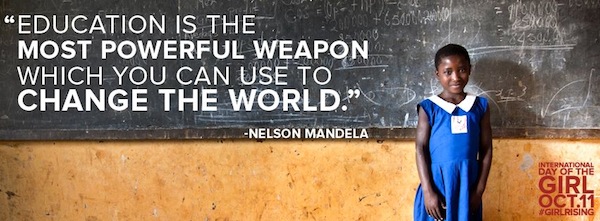
GIRL EDUCATION STATISTICS

Girls’ education goes beyond getting girls into school. It is also about ensuring that girls learn and feel safe while in school; complete all levels of education with the skills to effectively compete in the labor market; learn the socio-emotional and life skills necessary to navigate and adapt to a changing world; make decisions about their own lives; and contribute to their communities and the world.
Girls’ education is a strategic development priority. Better educated women tend to be healthier, participate more in the formal labor market, earn higher incomes, have fewer children, marry at a later age, and enable better health care and education for their children, should they choose to become mothers. All these factors combined can help lift households, communities, and nations out of poverty.
According to UNESCO estimates, 130 million girls between the age of 6 and 17 are out of school and 15 million girls of primary-school age—half of them in sub-Saharan Africa— will never enter a classroom.
Poverty remains the most important factor for determining whether a girl can access an education.
For example, in Nigeria, only 4 percent of poor young women in the North West zone can read, compared with 99 percent of rich young women in the South East. Studies consistently reinforce that girls who face multiple disadvantages — such as low family income, living in remote or underserved locations, disability or belonging to a minority ethno-linguistic group — are farthest behind in terms of access to and completion of education.
Violence also negatively impacts access to education and a safe environment for learning. For example, in Haiti, recent research highlights that one in three Haitian women (ages 15 to 49) has experienced physical and/or sexual violence, and that of women who received money for sex before turning 18 years old, 27 percent reported schools to be the most common location for solicitation.
Child marriage is also a critical challenge. Child brides are much more likely to drop out of school and complete fewer years of education than their peers who marry later. This affects the education and health of their children, as well as their ability to earn a living. According to a recent report, more than 41,000 girls under the age of 18 marry every day and putting an end to the practice would increase women’s expected educational attainment, and with it, their potential earnings. According to estimates, ending child marriage could generate more than $500 billion in benefits annually each year
Every day, girls face barriers to education caused by poverty, cultural norms and practices, poor infrastructure, violence, and fragility.
